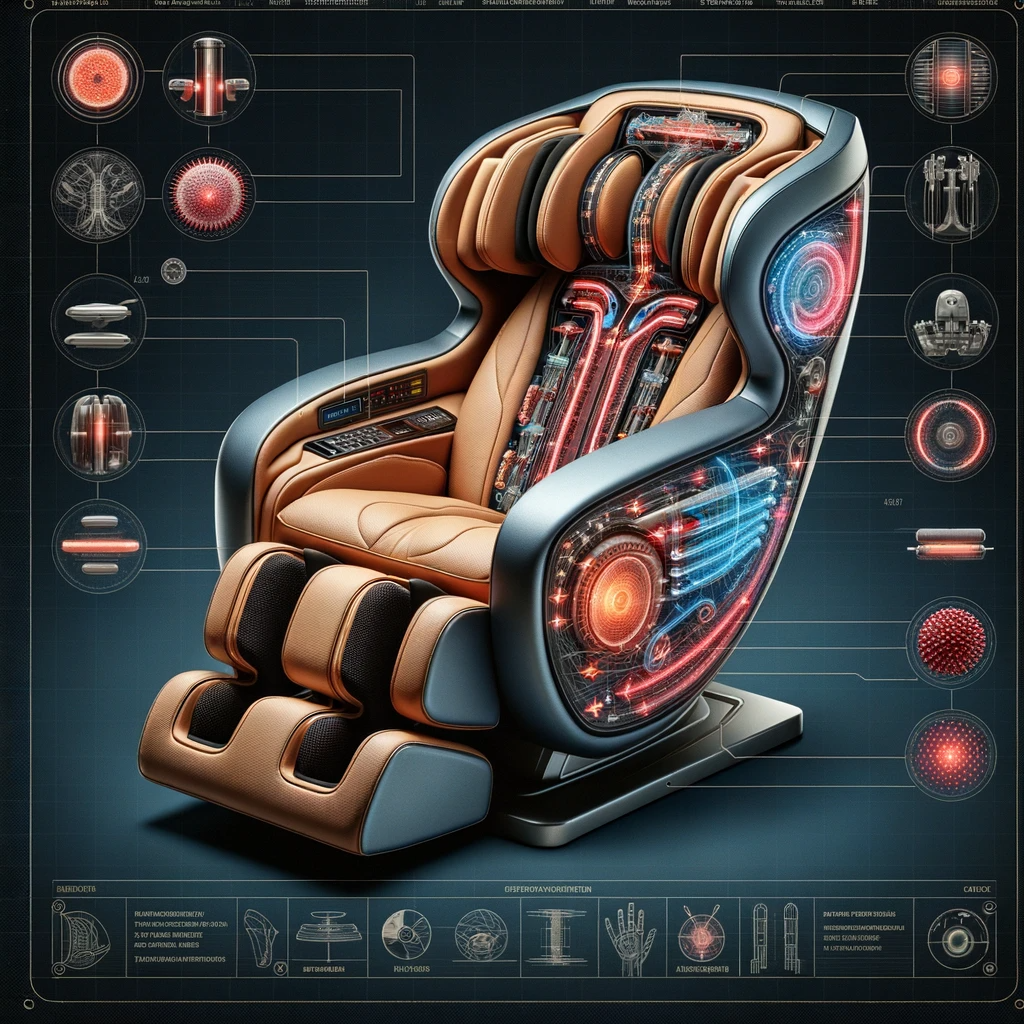Imagine coming home after a long day and sinking into your massage chair for some well-deserved relaxation. But have you ever paused to ponder, ‘How do massage chairs work?‘ In this article, we’ll delve into the mechanics and technology that transform a regular chair into a personal masseuse.

The Framework: Durable and Ergonomic Design
The first thing to understand is the foundational structure of the massage chair. Built with a combination of metals, hard plastics, and padding, the chair is ergonomically designed to support various body types, ensuring comfort during the massage. The frame’s sturdiness guarantees that it can withstand the pressure exerted by the internal mechanisms.
Rollers and Nodes: The Hands of the Chair
The primary components responsible for mimicking the hands of a masseuse are the rollers and nodes. These elements move in patterns determined by the chair’s internal programming:
- 2D Rollers: Move in two dimensions—up and down the back, as well as left and right.
- 3D Rollers: Can move outward or inward, providing a deeper massage by pressing more firmly against the back.
- 4D Rollers: Add speed variability, allowing for quick or slow movements that mimic different massage techniques.
Airbag System: Compression and Relaxation
Installed throughout the chair, airbags inflate and deflate, applying pressure to various parts of the body. This mechanism aids in stretching muscles, promoting circulation, and relieving tension. Airbags often work in tandem with rollers, providing a comprehensive massage experience.
Track Systems: Following the Contours of the Body
To ensure the rollers cover the entirety of the back, modern massage chairs utilize track systems:
- S-Track: Mimics the human spine’s natural curve, ensuring rollers move in an S-shaped path.
- L-Track: An extension of the S-track, it reaches down to the glutes and thighs.
Vibrational Motors: Gentle Shaking to Stimulate Blood Flow
Often found in the seat or leg rest, vibrational motors provide a gentle shaking motion, stimulating blood flow and helping with muscle relaxation.
Heating Elements: Warmth for Muscle Relief
Many massage chairs incorporate heating pads, primarily in the lumbar region. The warmth aids in relaxing tight muscles, further enhancing the massage experience.
Advanced Programming and Customization
Modern massage chairs come equipped with a variety of pre-programmed settings that simulate different massage techniques, like Shiatsu, kneading, tapping, or Swedish massage. Many chairs also offer a degree of customization, allowing users to adjust the intensity, focus on specific body areas, or even save personalized massage routines.
Remote Control and Connectivity
To enhance the user experience, many chairs come with a remote control or touchscreen panel. Some advanced models also offer smartphone integration, allowing users to control the chair or access additional features via apps.
Conclusion
The magic behind massage chairs lies in their intricate combination of mechanical movements, air pressure systems, and advanced programming. While nothing can truly replace the hands of a skilled masseuse, the technology behind these chairs has reached impressive levels of sophistication. So, the next time you sit back and enjoy a massage, you’ll not only feel relaxed but also have a deeper appreciation for the technological marvel you’re reclining in.


